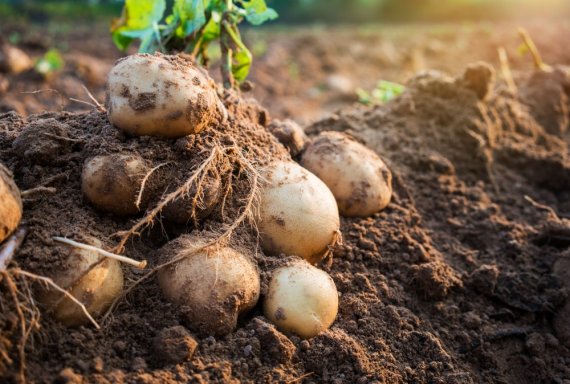Text: Nicole van ‘t Wout Hofland
At the Laboratory of Plant Breeding, Klaassen investigated whether the protein content of potatoes is affected by biological mechanisms and whether this is hereditary. An extensive genome analysis of potato varieties revealed that the gene StNPF1.11 is associated with the protein levels in potatoes. The gene codes for a nitrate transporter. ‘This transporter takes nitrate up from the soil and transports it through the plant,’ explains Klaassen. Given that nitrate is an important building block for proteins, this gene was a promising candidate for further study.
Hereditary
Next, Klaassen activated the selected gene in the entire potato plant so that the plant produced more of the nitrate transporter. That doubled the protein content in the potato tuber. ‘We saw this increase mainly in young plants,’ says Klaassen. Although the focus will ultimately be on fully grown potatoes, the study outcome still offers new insights. ‘Protein content is a complex property but we have now shown that this property is to some extent hereditary,’ says Klaassen. He suspects that protein content in fully grown potatoes is also regulated at the genetic level. And that is important because it means plant breeding companies can optimize this property.

Chlorophyll
Potato plants with a higher level of nitrate transporter turned not only to contain more protein but also to be bigger. Moreover, their leaves contained more chlorophyll. That is not so surprising, says Klaassen. ‘Nitrogen in the form of nitrate is important for the formation of chlorophyll. Adding more nitrate transporter probably means the plant takes up more nitrate, so there is more nitrogen available for the formation of chloroplasts.’
In his study, Klaassen activated the StNPF1.11 gene in all parts of the plant. That obviously led to an unnatural situation with possible adverse side effects. That is why Klaassen advises only activating the nitrate transporter in specific parts in follow-up research, for example only in the tuber.

 Photo: Shutterstock
Photo: Shutterstock